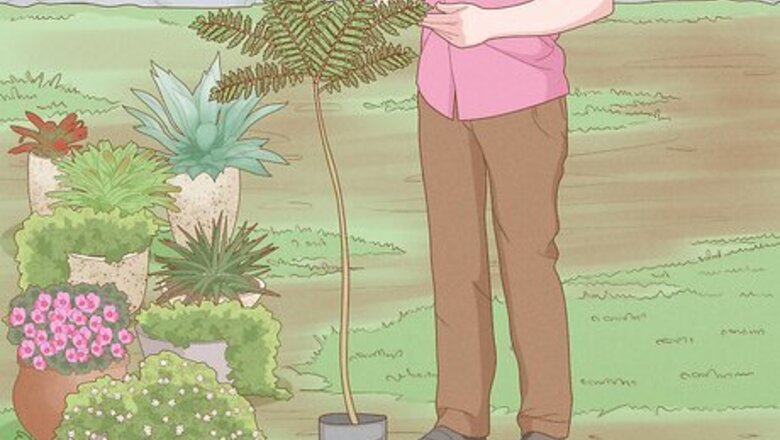
views
X
Research source
To grow your own jacaranda tree, you’ll need to obtain a seedling and plant it in an outdoor setting which gives the tree plenty of room to grow.
Obtaining a Jacaranda Tree

Purchase a jacaranda at a plant nursery. If you live in a temperate or warm climate, nearly all plant nurseries in your area should sell jacaranda seedlings. If you need help locating a jacaranda plant, or if a nursery has different options to choose from, ask the sales staff for assistance. If there isn’t a plant nursery in your area, you can also visit the Garden section of large retail stores. Retailers like WalMart and Home Depot will stock a large variety of plants, and will likely carry jacaranda seedlings.

Order a jacaranda seedling or seeds online. If you don’t live near a nursery or garden center, there may not be a way for you to purchase a jacaranda seedling in person. In this case, you can find and order a jacaranda online. Check major online plant retailers, such as Annie’s Annuals, Fast Growing Trees, or Nursery Live. Certain retailers will provide a seedling—with others, you may need to order a packet of seeds. Although jacarandas commonly grow in temperate or humid climates, they can survive in cooler areas as well—even regions that receive light frosts. Jacaranda trees grow best in zone 10 in the hardiness scale, which includes warmer climates.
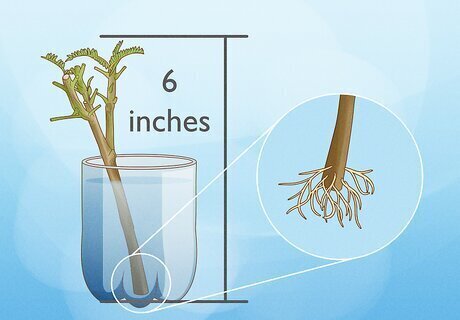
Plant a jacaranda from a cutting. If you know a friend or relative with a jacaranda tree, ask if you can take a cutting of their plant. A cutting is segment taken from a branch; the cutting itself should be at least 15 centimeters (6 inches) long, but can be as long as you would like. Place the jacaranda cutting in water until small roots begin to emerge. Then, plant the cutting in a small pot filled with rich soil, water regularly, and let the tree grow.

Transplant a growing jacaranda seedling. Jacaranda seedlings also tend to spring up around the base of mature jacaranda trees. If you can safely and legally dig up one of these seedlings, you can transplant it into a planter and so begin growing your own tree.
Planting a Jacaranda
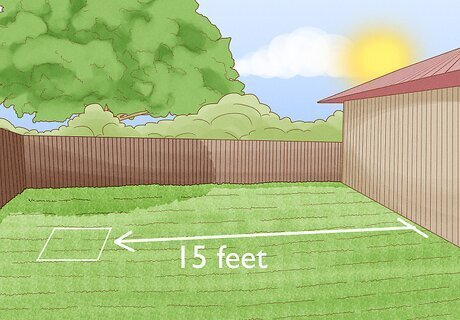
Plant the jacaranda in a sunny area. Jacarandas thrive with sun, and should be planted in an area that will receive frequent, direct sunlight for most of the year. Plant the tree at least 15-feet (4.5 meters) away from any nearby buildings, and do not plant seedlings in the shade of other, larger trees.
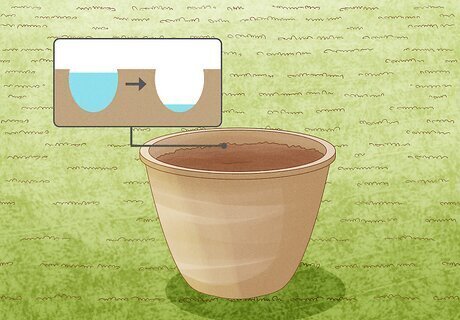
Plant the tree in rich, well-drained soil. Jacaranda trees will suffer if their roots don’t drain well, and they need fertile, rich soil to provide them with nutrients. If you’re planting your tree in a large planter or pot, place the jacaranda in a rich soil mixture. A local nursery or Garden center should have a variety of soil bags for sale, and sales staff can help you select a healthy mixture for your jacaranda. If you plant the tree directly into the ground, you’ll have less control over the makeup of the soil than if you were buying it from a plant nursery. Look for a patch of soil that isn’t prone to having puddles and has other plants already growing in it.
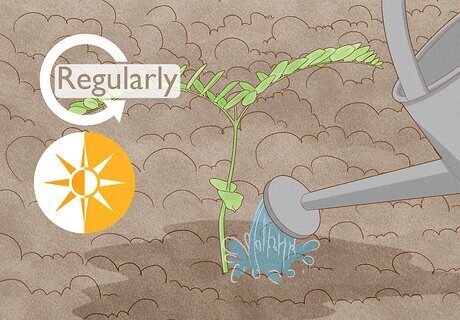
Water the tree regularly in summer. Jacarandas need frequent watering in order to grow and thrive in temperate climates. Healthy jacaranda trees grow quickly, but will wilt and possibly die if given insufficient water. Between March and October, use a household hose to water the jacaranda tree about once a week. During the cooler winter months, you do not need to water the tree as regularly. The jacaranda will not be growing during November through February, and so you should only water the tree about once a month.
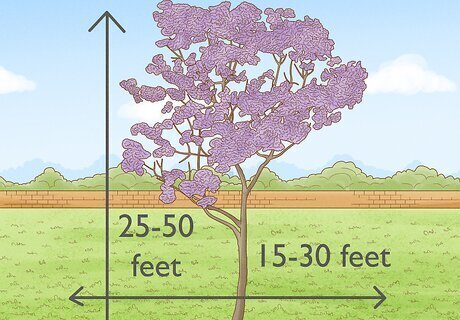
Plant the tree with plenty of surrounding space. Although they begin small as seedlings, jacarandas can grow into massive trees. Jacarandas commonly reach between 25-50 feet (7.6-15 meters) in height and can have a width of 15-30 feet (4.5-9 meters). Plant the jacaranda in a large, open area where it will have room to grow to its full size. For example, jacarandas do well in large front or back yards. If you plant the jacaranda in an already cramped or crowded space (e.g. under a patio roof or between narrow walls) it will not grow to its full size and may wither and become unhealthy. Plant the tree at least 15-feet (4.5 meters) away from homes and other structures so that falling branches are less likely to cause damage.
Maintaining the Jacaranda
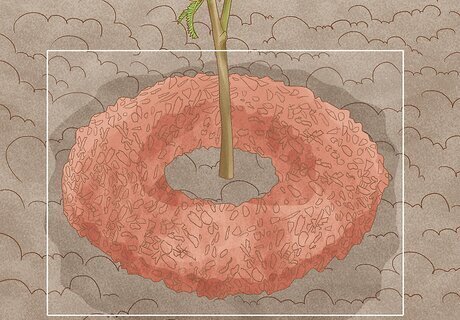
Place mulch around the base of the tree. Jacarandas need to conserve much of the water that they’re given in order to thrive and grow. To help the tree conserve water, and to keep the water from evaporating directly from the soil, you can set mulch around the tree’s base. To achieve the best effect, lay the mulch about 5 centimeters (2 inches) thick. Purchase mulch from a local landscaping company, plant nursery, or gardening center.
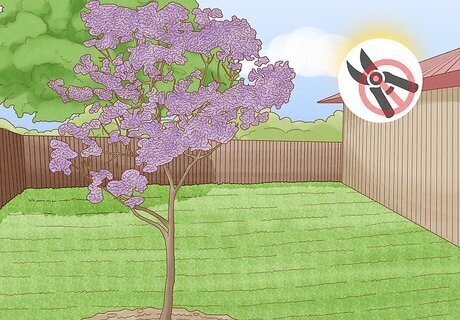
Do not prune the tree. The branches of a jacaranda tree grow vertically and expand outward in all directions. Let the branches grow on their own; if you trim shoots or prune branches, you may permanently stunt the tree’s growth, or the tree may send up suckers. Whenever a jacaranda branch is pruned, it sends out vertical shoots, and so continual pruning will lead to an unnaturally tall and misshapen tree. If left undisturbed, a jacaranda will grow into a roughly umbrella-shaped tree.
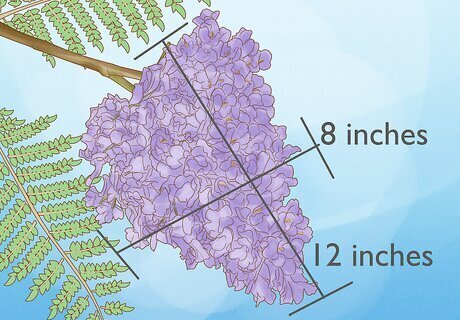
Clean up the jacaranda’s dropped flowers. The tree’s bright-colored flower clusters can grow up to 12 inches (30 centimeters) long and 8 inches (20 inches) wide. When these fall from the tree, the flowers will carpet the ground, sidewalks, and roads beneath the tree. If the tree is on your property, you’ll be responsible for raking up and disposing of the jacaranda flowers. Do not plant a jacaranda tree in a position where its branches will arch over a swimming pool. When the flowers fall in autumn, they will blanket the surface of the pool and can clog the water filter.


















Comments
0 comment